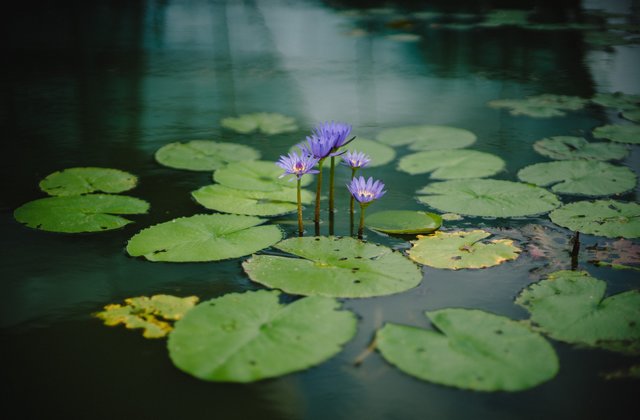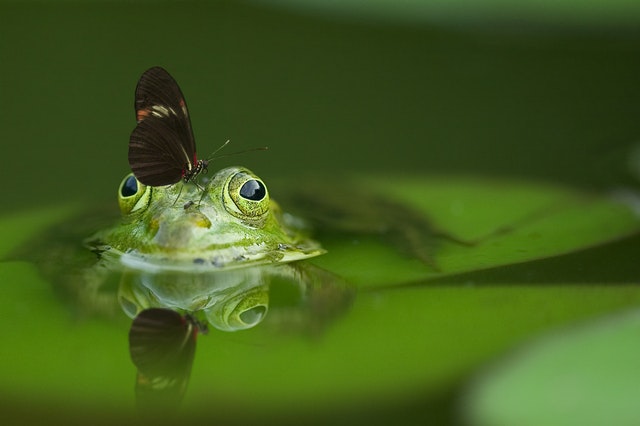We know that climate change contributes to all sorts of environmental issues: rising sea levels, heatwaves, crop failures, wildfires, and more. But it also has some unexpected consequences—after all, everything in nature is connected, and if you tug at a string, the whole system can start to unravel.
Over the past summer, you may have seen headlines in the news about the dangers of toxic algae blooms—or you may have lived near a body of freshwater where warnings were posted because of these blooms. It’s not a coincidence that these blooms are spreading as the planet heats up.

Algae itself is generally harmless. Anytime you go swimming in the ocean or a lake, you probably notice some algae growing on rocks, but don’t worry—it’s not a hazard to your health. However, some species of algae can release toxins into the bodies of water where they grow. In high concentrations, these toxins can be very harmful to our health. They can affect your liver or nervous system function, resulting in illness or even death, and they can also be fatal to your pets. If you swim in contaminated water, or even get sprayed by the water while on a boat or jet ski, you are at risk for health complications. Eating fish or shellfish that have consumed high quantities of toxic algae can also make you sick—sticking with plant-based alternatives lets you avoid that risk.
Toxic algae blooms are a yearly occurrence in some areas, like the American Southeast and the Gulf coast—they are natural, and it would happen even if we were not in the midst of a climate crisis. People living in areas where the climate becomes very hot and humid during the summer have been aware of toxic blooms, and they know to avoid going in the water when public health officials put out warnings about the water quality. These blooms thrive in warm water—and that’s why the increase in average temperatures is making them more common and making it possible for them to grow further north.
Climate change is making these blooms worse, which can endanger our health and the health of wildlife in the area. As the average water temperature rises in these lakes and ponds, it provides a better environment for these blooms to grow. Climate change can also indirectly contribute to these toxic blooms. For example, natural disasters like hurricanes have been getting more destructive because of warming ocean temperatures and rising sea levels that make storm surges worse. When areas around factory farms are flooded during major storms, it can result in runoff composed of animal waste, which ends up in lakes, ponds, and rivers. The nutrients in this waste end up feeding the algae, and the blooms can spread.
So, what can we do about these blooms? First things first: heed the warnings and take steps to protect yourself. If public health officials warn that a particular lake or pond is contaminated, do not go swimming or boating during this time. If you’re a dog owner, you know that many of them will drink from any body of water if they’re thirsty enough, and if they happen to lap up any toxic algae, it could be life-threatening. If the water is not safe for you, it’s not safe for your dog. And if you go to a lake or pond and notice that the water looks funky, but there’s no official warning posted? Better safe than sorry. Save the swimming for another day.

The good news is that protecting yourself from these algae blooms is relatively easy—it’s as simple as staying out of the contaminated water. But here’s the real question: how do we stop these blooms from getting worse? Unfortunately, the only real way to tackle them is by taking action on a massive scale, and that’s going to be quite difficult.
The factory farm system produces lots of agricultural waste, which results in runoff that feeds these blooms. Encouraging people to transition to a vegan lifestyle and to stop supporting factory farms can help. The runoff from factory farms can be hugely destructive, and we need to shift our food system away from dependence on factory farming (and ideally, eliminate factory farming altogether).
Climate change is the root cause of these worsening toxic algae blooms—although there are other contributing factors, this is a major reason that they’re spreading further north and becoming more intense. This is just one of the many public health issues that climate change can exacerbate, and preventing a future rise in global temperatures is going to take sustained global efforts. Supporting legislation to help curb emissions is one of the most important things that we can all do to tackle these problems.
Also by Jane: Can’t Compost? Here’s How To Get Creative With Food Waste
Why Natural Deodorant Might Irritate Your Skin—& What To Do About It
Get more like this—Subscribe to our daily inspirational newsletter for exclusive content!
__
Photo: Pexels




